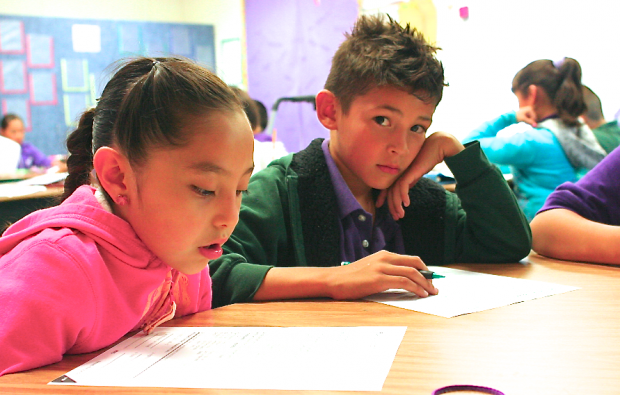To help disadvantaged kids who are struggling to keep up in school, some education advocates believe that extending the school day could give them the extra boost they need. They argue that many parents can’t afford to send their kids to the varied extracurricular activities that wealthier children enjoy – leaving poorer kids with a sparse education that focuses primarily on testing.
On that premise, five states recently announced that select school districts will participate in a three-year extended time pilot project funded with a mix of federal, state and district funds, along with private philanthropy from the Ford Foundation and National Center on Time and Learning.
Extended-time advocates cite studies showing a gap in childhood opportunity that mirrors the widening income gap. Wealthy families can and do spend more money on music and art lessons, tutors, and summer camp for their children that help them get ahead, while low-income kids often go home after school to unsafe neighborhoods, with little supervision and fewer positive outlets for their time and energy. The extended time movement is meant to correct those inequalities by offering the same diverse array of activities and adult mentors to disadvantaged children.
But simply tacking on hours at the end of a school day is not the solution, according to some.
"The issue is that many of the schools that poor kids go to are not good schools," said Elena Silva, a senior associate at the Carnegie Foundation for the Advancement of Teaching. "If that’s the case, the obvious question is, why would you extend more time? You don’t need more of a bad thing." Silva has researched the efficacy of extended time and come up with mixed results.
In theory, it could work, she says, but it's often resource intensive and takes the space and time for creative outside-the-box thinking. Silva is skeptical that school districts will have the time or money to redesign the school day in the ways that are necessary to make extended-learning effective. The strongest research out there supports a shorter summer to minimize the summer learning loss that is well documented among low-income students.


